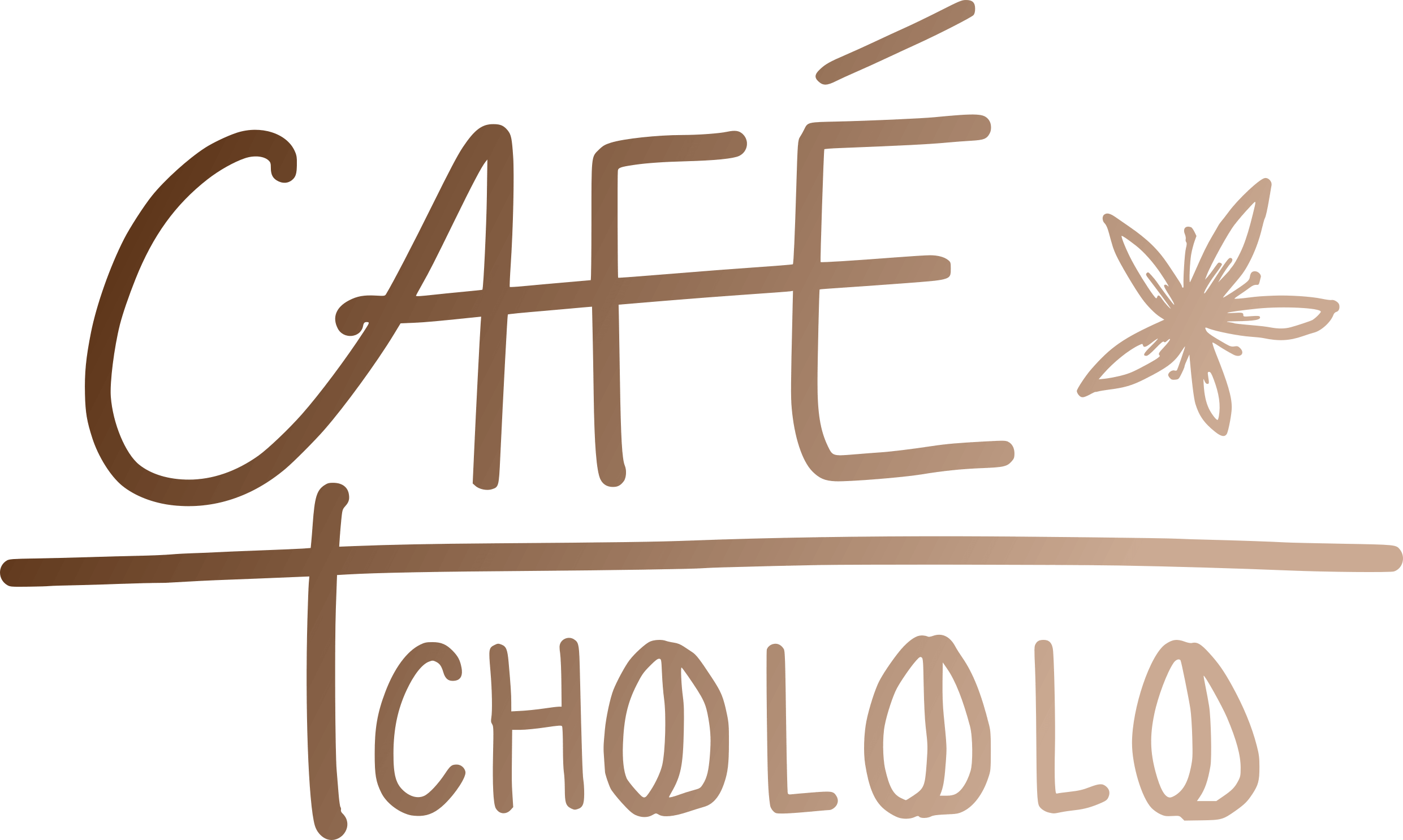GUADELOUPEAN COFFEE, EXCELLENCE AND INDIVIDUAL PRODUCTION
BASSE-TERRE ISLAND, GUADELOUPE
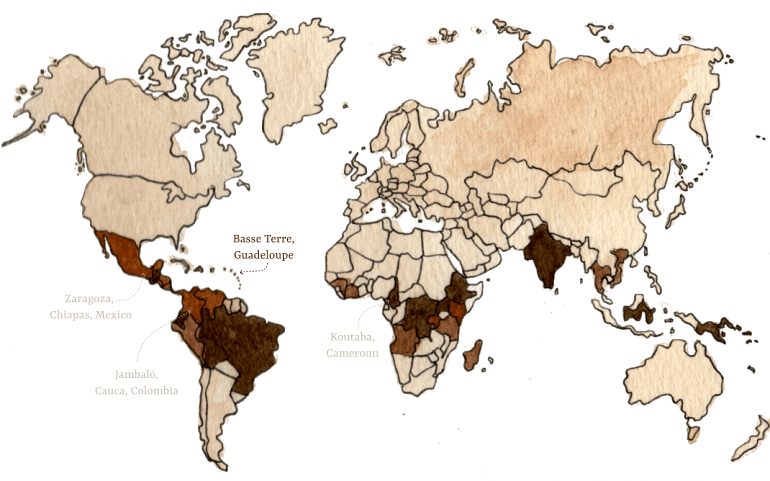
COFFEE OF GUADELOUPE, A FASCINATING STORY
The island of Guadeloupe has been inhabited for millennia by Arawak Indians, coming from Venezuela. Evidence of this can be seen in ancient rock engravings that are still clearly visible today. In the Caribbean language, the place was called Karukéra, "the island of beautiful waters".
The island was an important place of resistance to the arrival of the colonists after the "discovery" of the Americas. It was then a major marooning ground.
Today, the cracking of whips still resonates. The difference is that it's in a peaceful way that they're struck against the ground during colorful and emotional carnivals. In memory of indelible traces, and in resistance to a colonialism that persists today in underhand forms.
Generations follow one another,
Keeping their heads under water while others dive in.
Successively prisoners of the same chains,
But always with your feet on the ground, your dignity as freedom.
With coffee prices so low, how can coffee be produced in a country where the cost of living is high? Well, coffee growing in Guadeloupe continues for personal consumption. The aim is not to supply the market. A few long-established brands remain, buying up their production from ageing growers, just like their farms whose trees are not renewed. Exports of "café bonifieur", Arabica of the Bourbon Pointu variety, are minimal and have difficulty in asserting their taste value. Yet, it was these same trees that gave birth to Jamaica's world-renowned Blue Mountain variety.
The symbolic power of coffee is well maintained within families. On a small scale, some inhabitants keep a few coffee plants among other plants, which they nurture and harvest before drying and roasting them, sometimes as part of a ritual.
In Creole gardens, these magnificent spheres of amazing biodiversity, there's no monoculture, just opulent vegetation, fruit, trees and plants that enthusiasts use in all their forms. Indispensable for food, medicine, shelter, tools... This undeniably goes hand in hand with the preservation of knowledge and know-how. For example, vanilla is oozed using the teeth of garfish —fish with elongated bodies and mouths— to prevent the beans from opening before drying.
Special thanks to Lisa, Tony, Kouatolando and Evens.
Coffee is a whole,
Even the cup changes the taste.
Just planted,
The grain already knows its destiny
An eventful trajectory through space,
Unchanged virtues despite time goes by.
This elexir warms body and spirit
Of the rich and the poor.
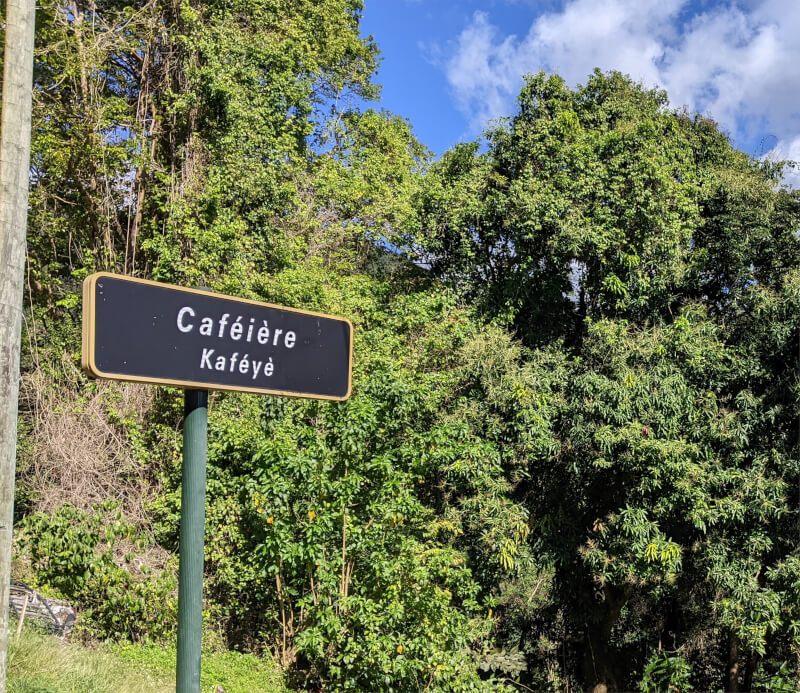
"KAFÉYÈ" MEANS COFFEE FIELD.
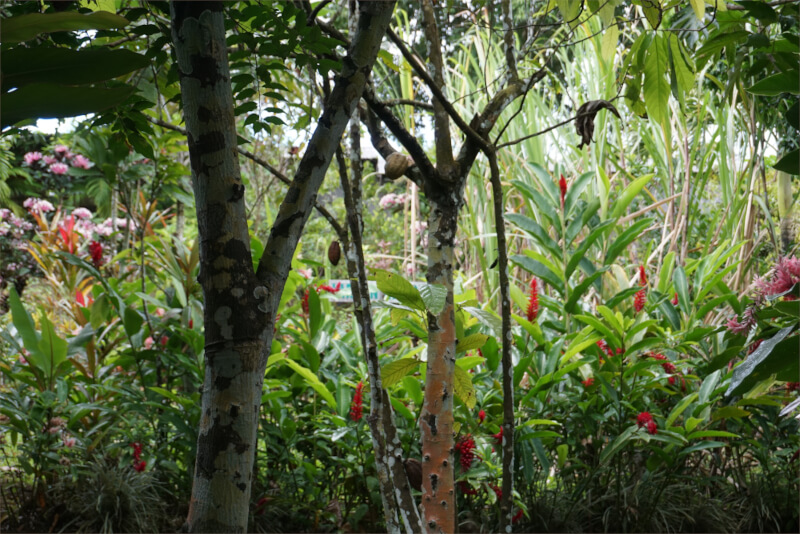
CREOLEGARDEN
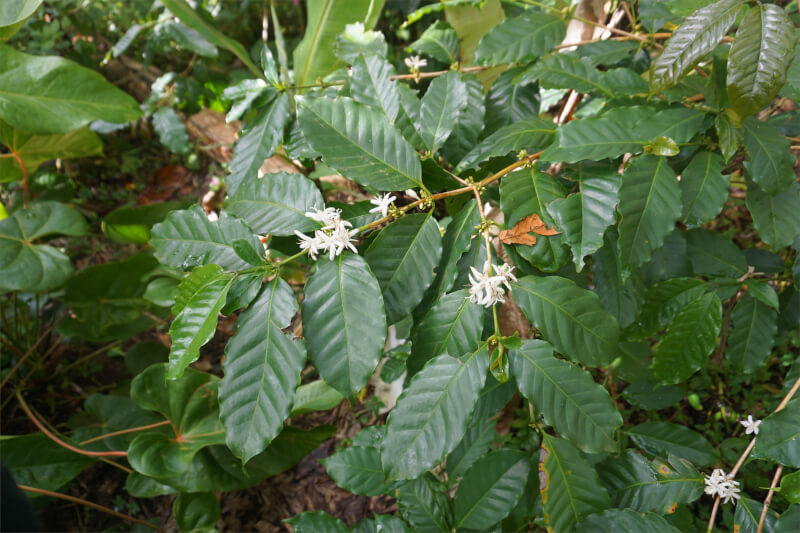
COFFEE.WITH FLOWERS
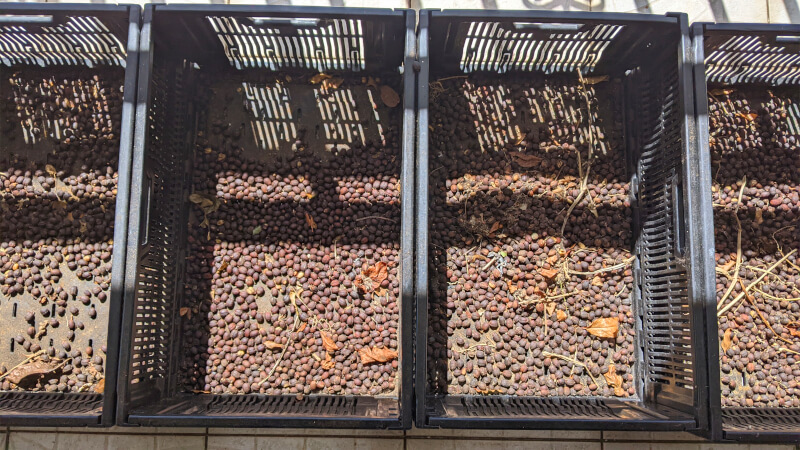
COFFEE. IN ITS NATURAL DRYING FORM.

COCOA BEAN
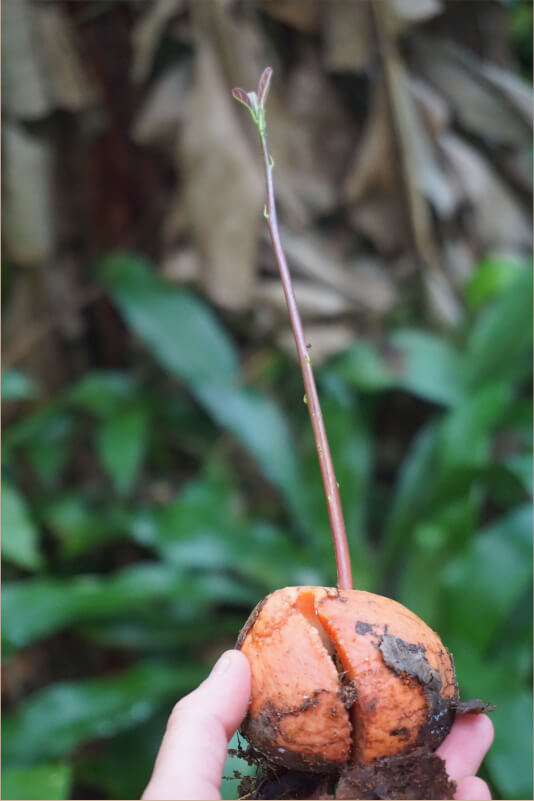
YOUNG AVOCADO
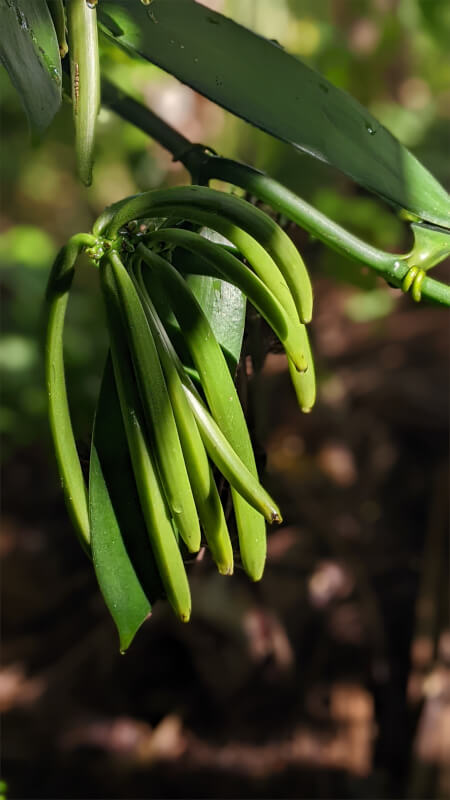
GREEN VANILLA
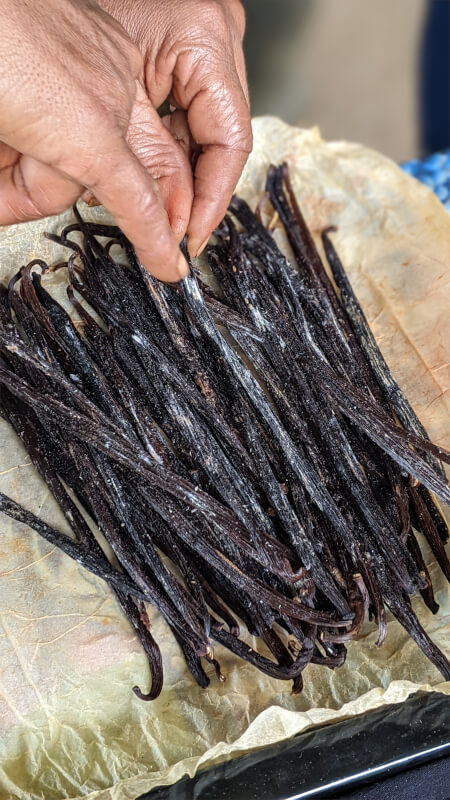
SUGAR CRYSTALS ON VANILLA BEANS
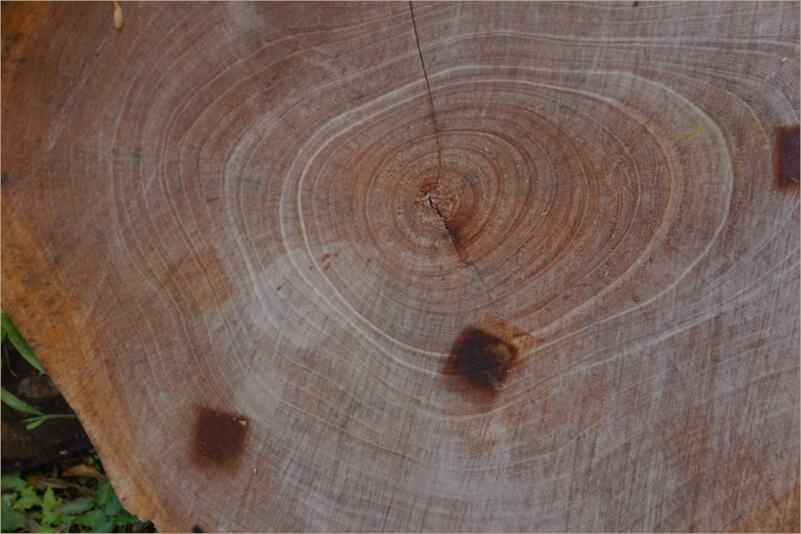
CUTTING A TREE TRUNK
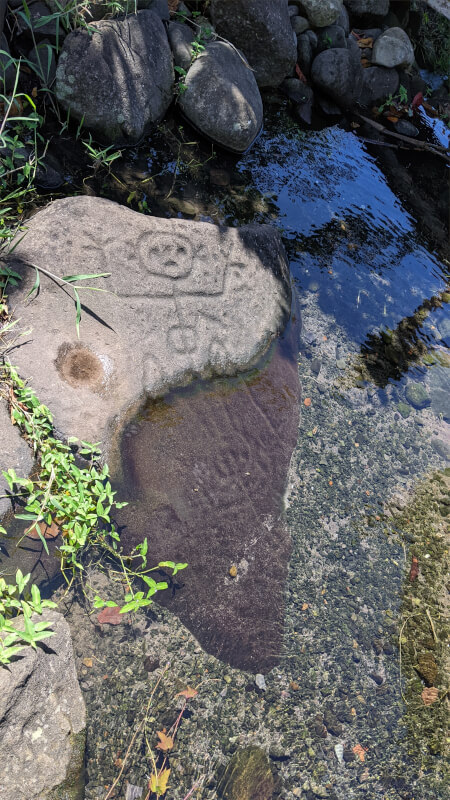
ANCIENT STONES ENGRAVING FROM THE 3RD CENTURY.
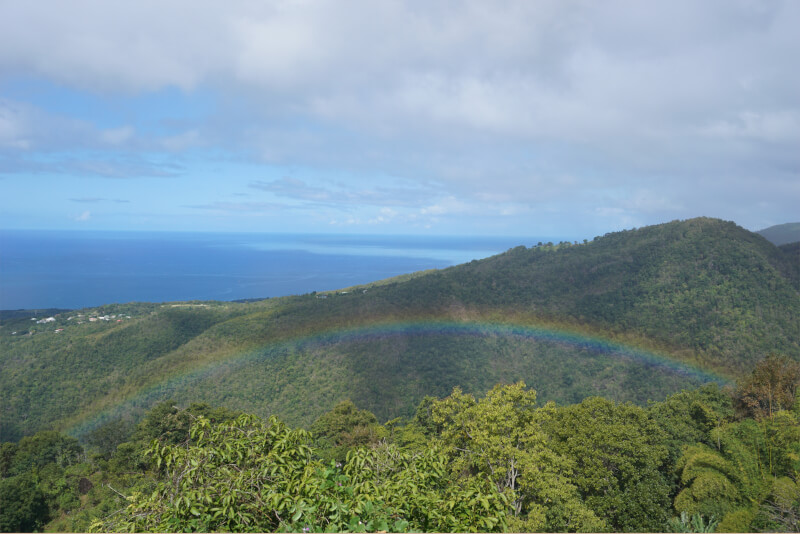
GUADELOUPEAN RAINBOW.
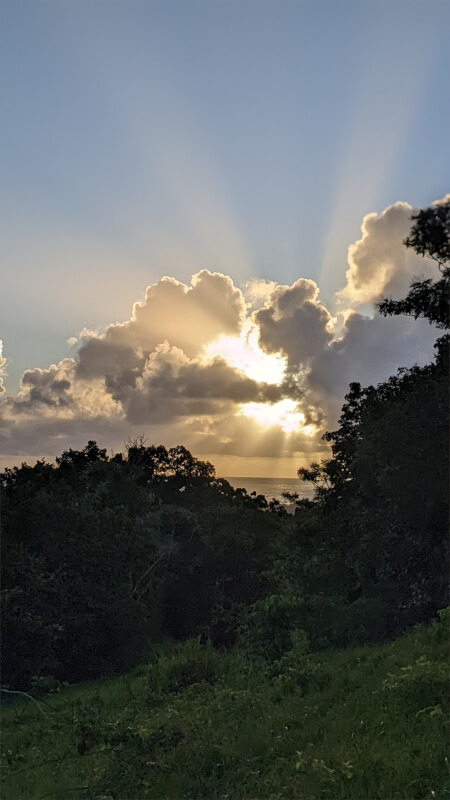
SUNRISE ABOVE THE CARRIBEAN SEA
